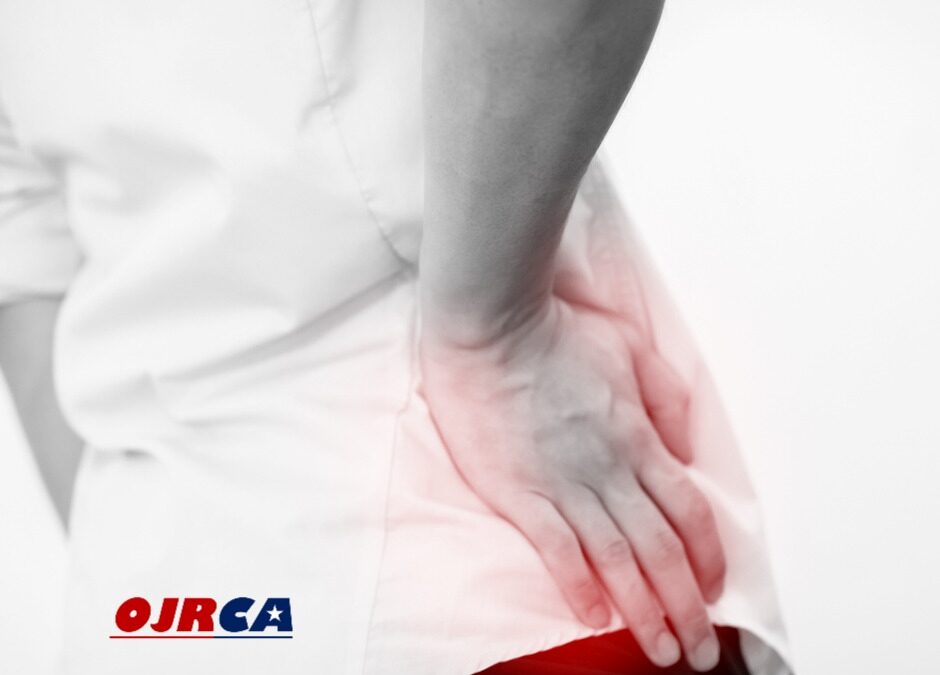My Doctor Told Me I Need a Hip Replacement. What Happens Next?
Your doctor has just said the words you’ve been dreading ever since you began having significant hip pain. “I’m sorry but it is time to consider a hip replacement.” In the past, hip replacement surgery required a large incision and months of rehabilitation following surgery to learn how to walk again. Today, you have more options than that. Although many surgeons still perform the surgery using the “old school” large incision that cuts and releases more tissues, there are minimally invasive, muscle and tendon sparing approaches to surgery available. These techniques have been recognized as safe alternatives, and in the right hands, can make all the difference for the patient and their recovery.
If you’ve been told you need a hip replacement, call Outpatient Joint Replacement Center of America (OJRCA) to learn about our minimally invasive outpatient procedure. Don’t let hip pain stop you from living the active life you want — call us to make an appointment to learn more about our unique protocol.
Before Surgery
Many people feel stressed and overwhelmed at the thought of a total hip replacement surgery and rightly so. The first thing we’ll do is schedule you for an appointment to come in and talk to our team. We understand that choosing to get elective surgery is a big decision.
At your appointment, our team will perform a full evaluation. We’ll discuss your medical history and the treatment methods (like medications, injections, and physical therapy) that you’ve already tried and determine what other non-surgical options remain. We’ll want to hear about your symptoms and how they affect your daily life: How well (or not) can you walk, climb stairs, get into and out of a car, and perform basic exercise routines? Is your hip pain constant and present at rest? Does pain prevent you from falling asleep or wake you up in the middle of the night? We’ll perform a physical evaluation to test your flexibility and joint range of motion. We’ll also look at previous image studies if you have prior x-rays or MRI’s to see the extent of your joint damage.
After a thorough examination, our team will discuss your options with you and assess whether or not you’re a candidate for hip replacement surgery.
During Surgery
At OJRCA, we perform minimally invasive hip replacement surgeries in the outpatient setting. With our protocol, you’ll be able to return home within a few hours following the procedure. Our process includes unique, specially designed pain management protocols that are administered before, during and after surgery. You’ll receive local anesthetic blocks that prevent pain signal transmission for up to 2-3 days after surgery, leading to less post-op pain and a marked reduction in opiate medications after surgery.
Our surgical techniques are muscle-sparing, tendon-sparing and ultra minimally invasive. Our incisions are as small as possible (as small as 3-5 inches). We then access the hip joint by moving aside muscles, tendons and ligaments. The femoral head (top of the thigh bone) is removed and replaced by a ceramic ball that rests on top of the metal stem inside the femur. A metal socket replaces the bony hip socket. Our hip implants are titanium based and this allows for the bone to grow into the metal creating a long lasting attachment and eliminates the need for cement. The new “joint cartilage” is a plastic liner that sits inside the socket between the implant surfaces.
Our hip implants are made with strong, durable materials that enable you to regain a full range of motion and movement in the joint after surgery. The durability of the parts has been markedly improved by science over the last two decades, making the need for repeat surgery less than 1% after 15-18 years. YES!! 99% survivorship after 15-18 years.
After Surgery
Your post-surgical recovery is driven by two things, and both of them involve getting up and getting moving again.
1. While you’re still in our care, our goal is to have you walking within a few hours after your surgery. Early movement helps improve blood flow, reduce the risk of dangerous blood clots, and prevent painful stiffness that could slow down your recovery efforts. While you may be reluctant to get up and walk due to achiness or soreness, walking actually decreases post-op hip pain, swelling and inflammation. Delays in mobility or prolonged immobilization can cause complications like loss of muscle strength and bone mass, contractures, soft tissue damage, and even cardiovascular issues.
2. Your compliance with physical therapy is the number one factor that will determine the success of your procedure. Within one or two days after surgery, you’ll start physical therapy at an outpatient clinic near your home. This has been shown to be much more effective than home therapy. Your therapist will work with you to restore full movement and range of motion in the new joint, increase strength in the surrounding muscles, improve circulation, and return to everyday activities. Your new artificial implant will support full and free movement. You’ll need therapy for a few weeks after surgery, but you will still resume your normal activities at the same time.
After your surgery and physical therapy sessions are complete, continue to live a healthy, active lifestyle to maintain your joint and muscle strength and keep your new hip implant in good shape. Regular exercise and weight management are two ways to ensure your hip replacement will remain strong and stable for many years to come.
Call OJRCA to Learn About Outpatient Joint Replacement Surgery
If hip pain from arthritis is keeping you from being active and enjoying the quality of life that you deserve, it may be time to consider outpatient joint replacement surgery. At Outpatient Joint Replacement Center of America, we’re committed to helping you reclaim your health and former activity levels. Please call us or reach out online to schedule an appointment at our Tampa, FL, clinic.


